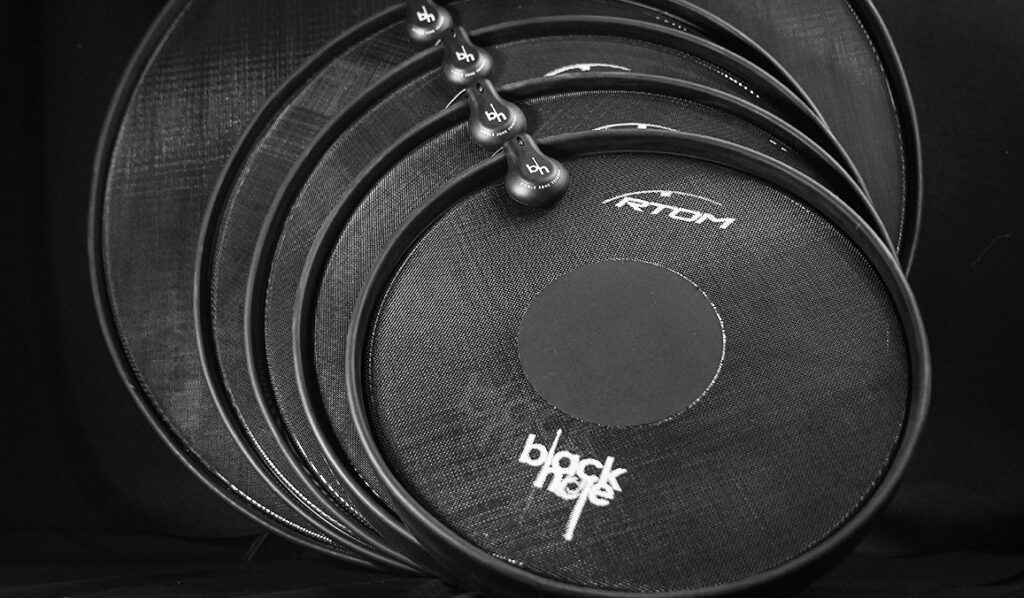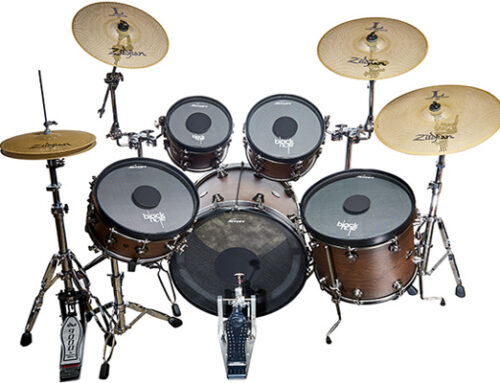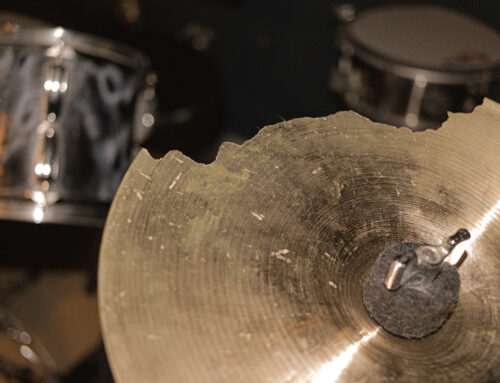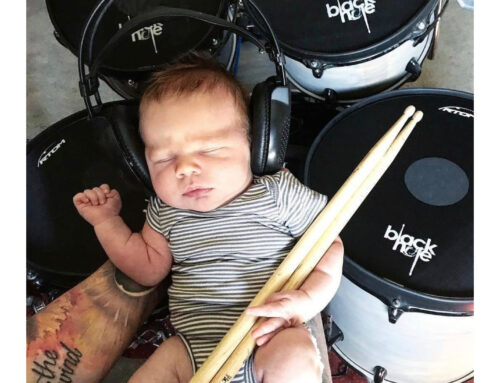A Black Hole Rescue and the Glory of the BH Single-Zone Trigger Pack
By Michael Molenda*
Sometimes, brilliant plans devised in your brain quickly devolve into utter madness when they are deployed under the harsh and unforgiving spotlight of the real world.
 Case in point: During the early months of the pandemic, when it was less-than-ideal to travel to shared rehearsal spaces, I ordered a small and relatively quiet, jazz-cafe-sized drum kit so I could practice in my home office without driving the neighbors insane. Genius, right?
Case in point: During the early months of the pandemic, when it was less-than-ideal to travel to shared rehearsal spaces, I ordered a small and relatively quiet, jazz-cafe-sized drum kit so I could practice in my home office without driving the neighbors insane. Genius, right?
As it happened—not so much.
Unfortunately, the COVID lockdown had required that my wife work from home, as well, and she had to negotiate countless Zoom and Microsoft Teams meetings with coworkers. What is super annoying during a virtual business meeting? A loud drummer bashing out grooves over and over while people are trying to contribute to the conversation at hand.
My mini kit didn’t last through one minute of one meeting.
Given an eight-to-ten-hour workday plus chill time, dinner, dog walking, and honoring a neighborly “no thunderous noises past 10 pm” curfew, I surmised that daily drum practice could occur safely between 8:30 pm and 9:30 pm. Not exactly a productive practice schedule.
I should also explain that, for the purpose of feel, I prefer to rehearse with acoustic drums rather than an electronic set, and the e-drums that offer an acoustic-drum-like sensation typically cost more than I wanted to spend for a COVID kit. In short, I was stuck.
Black Holes to the Rescue
However, I stumbled across the Black Hole Practice System while wistfully seeking out drum gear for gigs I hoped I’d be able to play once the virus subsided or eased up. I was happy because I adore simple solutions. The Black Holes dropped right atop my existing drum heads with no further bother or fuss, and adjusting the tension of the Black Hole mesh heads to my preference was as easy as turning the single-point tuning ring with the included key. Personal ease-of-use status nailed!
And then something else happened…
My band opened for a very production-oriented Duran Duran tribute band, and, in addition to MIDI and audio background tracks firing off during their set, the drummer used drum-head triggers and a sound module to evoke the various drum styles of the band’s hits. From ’80s reverb-washed snares to drier and funkier ’90s tones to the playground of today’s sampled vistas, the drum was like a musical chameleon changing up colors and textures to match the specific vibe of each song.
I was spellbound. The drummer was playing an acoustic Gretsch kit—a one-sound pony before the days of the music-tech rodeo—and controlling a vast spectrum of drum sets. It was obvious that using this technology meant drummers could still play acoustic drums, but deliver sounds with infinite sonic imprints. How could I get into this fun, functional, and awesome game?
I didn’t think the Black Holes would once again provide a solution.
But first, I had to do everything the wrong way.
I borrowed some triggers and a sound module and affixed the triggers to my performance kit. (COVID had indeed ebbed enough for me to return to the band rehearsal space.) I plugged the outputs of the sound module into the P.A. system, prepared to blow my band mates’ minds with some stunning sounds, and… they were not impressed.
The problem was that the natural, acoustic sound of the drums was very loud in the room, and setting the volume of the drum samples to the point where they could overtake the acoustic sounds meant the overall decibel range nearly hit the level of a jet engine in full roar. I hadn’t noticed this issue during the Duran Duran tribute, because the drum mix out in the house was almost 100-percent from the sound module. Any stage sound from the acoustic drums was far enough away from the audience that the fans only heard the samples being triggered.
So, that scenario was great for big-club gigs with a professional stage and sound system, but what about smaller nightspots, local bars, cafes, wineries, and so on? Bringing a trigger-and-sound-module setup to those types of shows would only work if I could reduce the volume of the acoustic-drum sounds and prevent them from infiltrating—and sonically compromising—the sampled tones.
bh Triggers for the Gigging Win
 Wait. Black Holes. And not just Black Holes, but Black Holes armed with the new bh Triggers. The bh Triggers act like conventional drum triggers, but they are made exclusively to work with the Black Hole Practice System. Set up is easy—and remember how much I love “easy”—because you simply press the trigger onto the rubber rim of the Black Holes.
Wait. Black Holes. And not just Black Holes, but Black Holes armed with the new bh Triggers. The bh Triggers act like conventional drum triggers, but they are made exclusively to work with the Black Hole Practice System. Set up is easy—and remember how much I love “easy”—because you simply press the trigger onto the rubber rim of the Black Holes.
The system worked great in a “stress test” I set up in a tiny, local bar. I tend to hit the skins hard, but the Black Holes diminished the acoustic volume of the drums nicely, and the club’s semi-pro P.A. system had no trouble delivering the sampled drum sounds to the audience. It’s quite a kick to see a crowd in a narrow, submarine-sized bar marvel at the massive, sampled drum sounds shaking the room—especially when they’re used to hearing tattered acoustic kits dwarfed by guitars, bass, keyboards, and vocals. I had the added bonus of proving to my skeptical bandmates—who so viciously shot down the triggered kit at that early, un-Black-Hole-equipped rehearsal—that my hybrid drum idea could truly rock the house.
Even on a multiple-artist festival gig with limited setup time for each band, I was able to plop down the Black Holes atop my toms, snare, and kick drum (some added elastic cords and a bass extender are needed here to secure the Black Hole bass head), affix and plug in the bh Triggers, and connect the trigger outputs to my sound module almost before the bassist had his rig dialed in and his bass tuned.
A quick setup is always wonderful, of course, but what’s even more fabulous is when a show is back-lined by the promoter or one of the other bands, I never have to worry if the supplied drum kit sounds good, or passable, or dreadful. I just set up the Black Holes and bh Triggers, and every kit sounds exactly the way I like it. There’s also a “musician psychology” advantage because the Black Hole/bh Trigger system is completely non-invasive—meaning I don’t have to spend valuable time convincing the drum kit’s owner that I’m not going to abuse, reconfigure, or otherwise damage their baby.
Then, there’s the important question of gig toughness for any piece of gear. The cycle of setting up, performing, and breaking down equipment can be brutal, and products that could crumble under the pressure are usually avoided—unless you enjoy the prospect of having a critical instrument, amp, or pedalboard go down in mid-show. For my hybrid drumming rig, it’s more about ensuring the sound module is packed away safely, because the Black Holes and bh Triggers are pretty bulletproof. When secured atop each tom, the mesh Black Holes fit nicely into the drum cases, and I just toss the bh Triggers and cables into the hardware case. Once or twice during a brutally quick breakdown, I chaotically tossed everything into the hardware case, and the Black Holes and triggers were none the worse for wear when I was finally able to rearrange everything properly back at the rehearsal space.
In those instances where I was going full cowabunga into an uncontrolled roll, and I accidentally smacked a bh Trigger with my 7A drumstick, the trigger did not shatter or crack and kept working. That the plastic casings of the triggers are that resilient is comforting because I tend to hit the bh Triggers far more often that I should admit to. (If I go full acoustic at a show, savvy live-sound engineers know to back off the mics from the heads and snare so that I don’t batter them unmercifully—not the best reputation to have, I might add.) Throughout several gigs and rehearsals, the Black Hole/bh Trigger system did not fail me once, so I’m pretty sure I could bring the gear to a dream gig on Sir Richard Branson’s Necker Island—miles from a music store—and be confident everything would hold up brilliantly.
To me, one of the logistical beauties of playing acoustic instruments—a guitar, bass, piano, woodwind, horn, or drum kit—is that not much can go wrong. Add technology and/or electronics to the equation, and a host of gremlins can descend upon you.
Knowing this, I was initially reluctant to add mesh heads, triggers, and a sound module to my rig. An acoustic drum kit is a pain to set up, but when you get your system down, it’s not usually a big problem, and once the drums and hardware are arranged, you’re done. But the Black Hole/bh Trigger system is a delight to use. It doesn’t add much setup time or hassle, and the benefit of knowing exactly what I’ll sound like in every live-performance and studio situation is a beautiful thing indeed. Thanks to the Black Holes and bh Triggers, I’m hooked on hybrids!
*About the Author – Michael Molenda is Writer/Editor, Guitar Center; Founder/CEO, Guardians of Guitar NFTs, NowGenDrums; COO, Neural-Tunes (“Music as Medicine”); Vice President, Guitar, Mi5 Recordings/Universal Music Group; Longest Serving Editor-in-Chief of Guitar Player (1997-2018)



